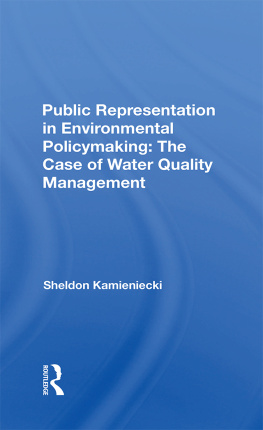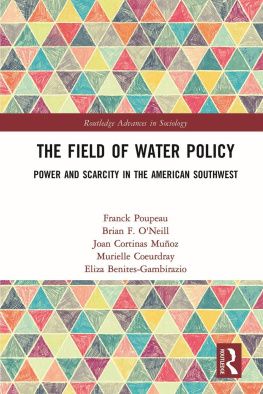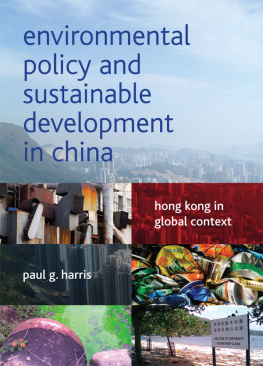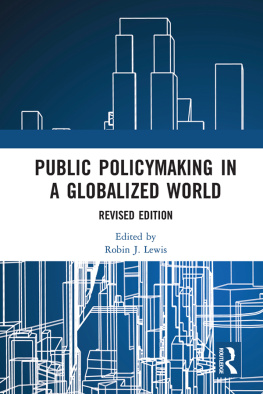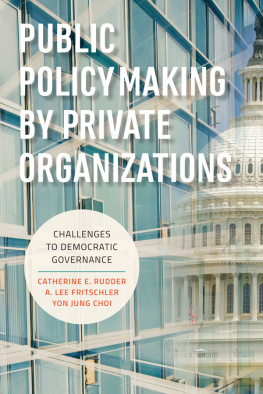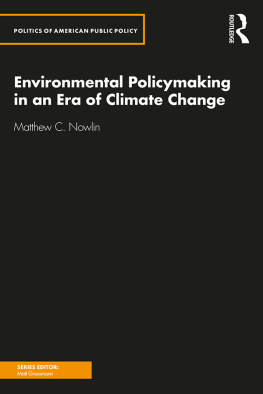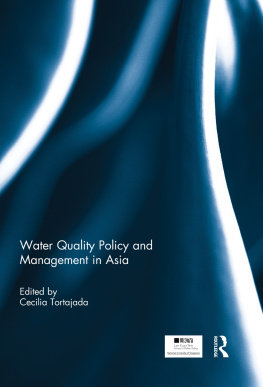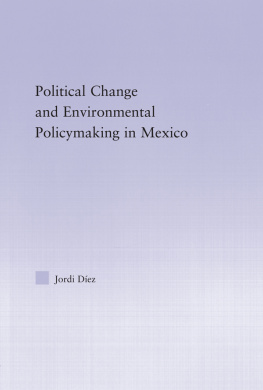Public Representation in Environmental Policymaking
Westview Replica Editions
This book is a Westview Replica Edition. The concept of Replica Editions is a response to the crisis in academic and informational publishing. Library budgets for books have been severely curtailed; economic pressures on the university presses and the few private publishing companies primarily interested in scholarly manuscripts have severely limited the capacity of the industry to properly serve the academic and research communities. Many manuscripts dealing with important subjects, often representing the highest level of scholarship, are today not economically viable publishing projects. Or, if they are accepted for publication, they are often subject to lead times ranging from one to three years. Scholars are understandably frustrated when they realize that their first-class research cannot be published within a reasonable time frame, if at all.
Westview Replica Editions are our practical solution to the problem. The concept is simple. We accept a manuscript in camera-ready form and move it immediately into the production process. The responsibility for textual and copy editing lies with the author or sponsoring organization. If necessary we will advise the author on proper preparation of footnotes and bibliography. We prefer that the manuscript be typed according to our specifications, though it may be acceptable as typed for a dissertation or prepared in some other clearly organized and readable way. The end result is a book produced by lithography and bound in hard covers. Initial edition sizes range from 500 to 800 copies, and a number of recent Replicas are already in second printings. We include among Westview Replica Editions only works of outstanding scholarly quality or of great informational value, and we will continue to exercise our usual editorial standards and quality control.
Public Rep resentation in Environmental Polic y makin g : The Case of Water Qualit y Mana g ement
Sheldon Kamieniecki
Relying on the results of a large survey research project in western New York State, the author compares the environmental planning beliefs of public officials and citizens. His major finding is that, although leaders involved in water quality planning projects and the public share similar views on environmental issues, these leaders are by far the worst predictors of citizens' views. Professor Kamieniecki's systematic probing of the determinants that make some officials more adept than others at accurate calculation of public preference uncovers imbalanced public representation due to several factors. He concludes with an evaluation of citizen participatory mechanisms and consequent recommendations designed to elicit a wide range of public opinion, a prerequisite for acceptable environmental planning.
Sheldon Kamieniecki is assistant professor of political science, California State College at San Bernardino.
Public Representation in Environmental Policymaking: The Case of Water Quality Management
Sheldon Kamieniecki
First published 1980 by Westview Press, Inc.
Published 2019 by Routledge
52 Vanderbilt Avenue, New York, NY 10017
2 Park Square, Milton Park, Abingdon, Oxon OX14 4RN
Routledge is an imprint of the Taylor & Francis Group, an informa business
Copyright 1980 Taylor & Francis
All rights reserved. No part of this book may be reprinted or reproduced or utilised in any form or by any electronic, mechanical, or other means, now known or hereafter invented, including photocopying and recording, or in any information storage or retrieval system, without permission in writing from the publishers.
Notice:
Product or corporate names may be trademarks or registered trademarks, and are used only for identification and explanation without intent to infringe.
Kamieniecki, Sheldon.
Public representation in environmental policy
making.
(A Westview replica edition)
Bibliography: p.
Includes index.
1. Water quality management--Planning--United
States--Citizen participation. I. Title.
TD223.K35 363.7'39456 79-27192
ISBN 13: 978-0-367-28481-7 (hbk)
The author would like to thank The Rockefeller, Ford, and Charles F. Kettering Foundations for their financial support. This study could not have been conducted without the assistance of the staff of the Environmental Studies Center and the Survey Research Center at the State University of New York at Buffalo. Discussions with Steven Cohen, Jonathan Czarnecki, and Frank DeGiovanni, while members of the Environmental Studies Center, were particularly useful. Comments by Professors Edward Erler, Nancy McGlen, James Stimson, and Paul Reitan were very helpful. Amy Miller diligently typed the final draft of this manuscript. The author is extremely grateful for the advice, guidance, and criticisms provided by Professor Lester Milbrath, Director of the Environmental Studies Center.
1
Introduction
The most ambitious effort ever undertaken by the federal government to cleanup the nation's waterways began with the passage of the Federal Water Pollution Control Act Amendments in 1972. Section 208 of this legislation establishes a number of comprehensive procedures to encourage regional planning for future water quality management in areas of the country that have experienced serious water quality problems. The procedures set forth in this section are designed to consider the many interrelated factors which contribute to poor water quality.
During the 1960s federal officials spent millions of dollars developing programs designed to improve the environmental conditions in various localities. Most of these programs lacked a viable public participation component and were often rejected by local leaders and citizens. To reduce the chances of rejection, and the waste of time and money it entails, the federal government requires that local officials and citizens have greater involvement in "208" water quality policy formulation and implementation. Section 101(e) of the law states:
Public participation in the development, revision and enforcement of any regulation, standard, effluent limitation, plan, or program established by the Administrator or any State under this Act shall be provided for, encouraged, and assisted by the Administrator and the States. The Administrator, in cooperation with the States, shall develop and publish regulations
Federal leaders therefore hope that local political officials will choose the most acceptable means of achieving the goals of the legislation, and after incorporating them into a plan, move forward at the local level to implement the plan (and the act).
As the law requires, the Environmental Protection Agency has set guidelines for citizen participation in "208" water quality planning. The agency hopes that public opinion will be included in the development of local water quality programs through active citizen participation. Just what kinds of participatory strategies need to be implemented in order to elicit a wide range of citizen input is hard to determine, and how many citizens ought to participate is also a difficult question to answer. If only a handful do, planners may formulate an inaccurate picture of the population's views. If too many people participate, however, little may get done. Cupps points out the problems posed by the involvement of too many citizens' groups. He argues that there is no guarantee that if many people participate effective programs will be produced. No empirical evidence exists to support the premise that more citizen participation leads to the development of more effective plans. Yet the greater the number of citizens involved in "208" planning, and the more planners know about their views, the greater the likelihood that implementable plans will be developed. Planners therefore face the problem of how to elicit a wide range of opinion in an efficient and effective manner so as not to adversely affect the planning operation.


